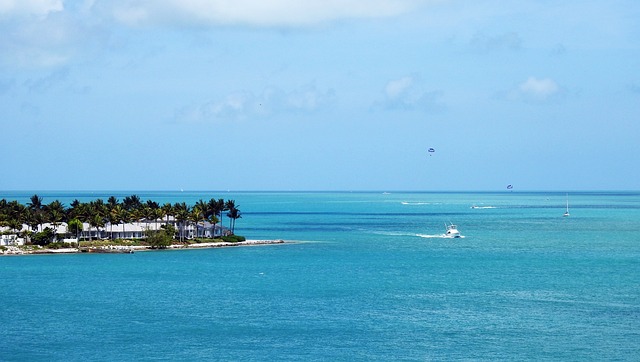Did you know that Mexico welcomed over 45 million international tourists in 2024, making it the second most visited country in the Americas? Yet surprisingly, many travelers miss out on the best experiences because they visit during the wrong season for their chosen region. This comprehensive guide will help you discover the perfect time to visit Mexico based on your destination and travel goals.
Understanding Mexico’s Climate Zones
Mexico’s vast territory spans multiple climate zones, each with distinct weather patterns that dramatically affect your travel experience. The country sits on the Tropic of Cancer, creating two main seasons: the dry season (November to April) and the rainy season (May to October). However, regional variations make timing crucial for your trip.
The diverse topography creates seven distinct climate regions, from tropical coastal areas to temperate highlands and arid desert regions. Understanding these zones is essential for planning your travel to Mexico effectively.
Best Times by Region
Coastal Regions (Cancun, Riviera Maya, Puerto Vallarta)
Peak Season: December to April The coastal areas experience their most pleasant weather during the dry season. Average temperatures range from 75-85°F (24-29°C) with minimal rainfall and lower humidity levels. This period offers perfect beach conditions but comes with higher prices and larger crowds.
Shoulder Season: May and November These months provide an excellent balance of good weather and reasonable prices. While there’s a slight increase in rainfall, it’s typically brief afternoon showers that don’t interfere with activities.
Rainy Season: June to October While this period brings higher humidity and daily thunderstorms, it’s also when you’ll find the best deals. The rain usually comes in short, intense bursts during late afternoon or evening, leaving mornings and early afternoons perfect for activities.
Central Highlands (Mexico City, Guadalajara, San Miguel de Allende)
Best Time: October to April The central highlands enjoy spring-like weather year-round, but this period offers the most comfortable conditions. Daytime temperatures range from 65-75°F (18-24°C) with cool evenings perfect for exploring colonial cities.
Rainy Season: May to September While temperatures remain pleasant, afternoon thunderstorms are common. This travel guide to Mexico recommends bringing layers as mornings can be cool while afternoons warm up significantly.
Northern Mexico (Baja California, Tijuana, Monterrey)
Ideal Time: October to March Northern Mexico’s desert climate makes cooler months most comfortable for travel. Temperatures are mild during the day (60-75°F/15-24°C) but can drop significantly at night, especially in mountain areas.
Summer: April to September Extreme heat makes summer travel challenging, with temperatures often exceeding 100°F (38°C). However, this period offers the lowest prices and fewer crowds for heat-tolerant travelers.
Southern Mexico (Oaxaca, Chiapas, Yucatan Peninsula)
Dry Season: November to April Southern regions experience their most pleasant weather during these months. The Yucatan Peninsula is particularly enjoyable with temperatures around 80°F (27°C) and minimal rainfall.
Wet Season: May to October High humidity and frequent rainfall characterize this period. However, the rain often comes in predictable patterns, allowing for planned activities during dry spells.
Monthly Weather Breakdown
January – March: Peak Tourist Season
These months offer the most reliable weather across all regions. Coastal areas enjoy perfect beach conditions, while highland regions experience mild, spring-like temperatures. Expect higher prices and crowded attractions.
April – May: Shoulder Season Excellence
April and May provide excellent weather with fewer crowds than peak season. Temperatures begin warming up, making it ideal for both beach and cultural activities. This period offers the best value for money.
June – August: Summer Challenges and Opportunities
Summer brings intense heat to northern regions and increased rainfall to coastal and southern areas. However, it’s also when you’ll find the best deals on accommodations and flights.
September – November: Transition Period
September still experiences rainy season conditions in most regions, while October and November mark the transition to dry season. Late November is particularly attractive as weather improves but peak season prices haven’t yet kicked in.
Regional Festivals and Events
Winter Festivals (December – February)
Many regions celebrate traditional festivals during cooler months. Day of the Dead celebrations in Oaxaca (November) and Christmas traditions throughout Mexico make winter travel culturally enriching.
Spring Celebrations (March – May)
Easter week (Semana Santa) is one of Mexico’s most significant holiday periods, affecting both crowds and prices. However, it’s also when you’ll experience authentic cultural celebrations.
Summer Festivals (June – August)
Despite challenging weather, summer offers unique cultural experiences like the Guelaguetza festival in Oaxaca and various beach town celebrations.
Travel Tips for Each Season
Dry Season Travel (November – April)
- Book accommodations well in advance
- Expect higher prices across all regions
- Pack light layers for temperature variations
- Take advantage of perfect outdoor activity conditions
Rainy Season Travel (May – October)
- Bring quick-dry clothing and rain gear
- Plan indoor activities for late afternoons
- Take advantage of significantly lower prices
- Enjoy lush, green landscapes and fewer crowds
Regional Considerations
- Coastal areas: Monitor hurricane season (June-November)
- Northern regions: Prepare for temperature extremes
- Central highlands: Pack layers for elevation changes
- Southern regions: Consider altitude sickness prevention
Budget-Friendly Travel Timing
Low Season Benefits (May – October)
Traveling during Mexico’s low season offers significant savings. Hotel rates can drop by 40-60%, flights are cheaper, and restaurants often offer special promotions. The trade-off is less predictable weather and potential for tropical storms.
Shoulder Season Value (April-May, November)
These months provide the best balance of good weather and reasonable prices. You’ll avoid both the peak season crowds and the rainy season unpredictability while still enjoying favorable conditions.
Peak Season Costs (December – March)
While offering the most reliable weather, peak season comes with premium pricing. Book early to secure better rates, and consider alternative accommodations like vacation rentals for better value.
Packing Essentials by Season
Year-Round Essentials
- Sunscreen (high SPF required)
- Insect repellent
- Comfortable walking shoes
- Light, breathable clothing
- Reusable water bottle
Dry Season Additions
- Light sweater for evenings
- Moisturizer for dry air
- Dust protection for desert regions
Rainy Season Specifics
- Waterproof jacket or poncho
- Quick-dry clothing
- Waterproof phone case
- Umbrella for urban areas
Health and Safety Considerations
Seasonal Health Factors
Summer’s intense heat increases dehydration risk, especially in northern regions. Rainy season brings higher mosquito activity, making insect repellent crucial. Always drink bottled water and be cautious with street food, particularly during warmer months.
Weather-Related Safety
Hurricane season (June-November) affects coastal areas, with September and October being peak months. Stay informed about weather conditions and have flexible travel plans. Northern regions can experience sudden temperature drops, especially in winter.
Regional Transportation Considerations
Dry Season Advantages
Roads are in better condition, flight delays are less common, and outdoor activities proceed as planned. This makes it easier to stick to tight itineraries and multi-destination trips.
Rainy Season Challenges
Heavy rains can cause road closures in mountainous areas and flight delays in coastal regions. Build flexibility into your schedule and consider travel insurance for weather-related disruptions.
Conclusion
Mexico’s diverse climate means there’s no single “best” time to visit the entire country. The ideal timing depends on your specific destination, budget, and travel preferences. Coastal regions shine during the dry season (November-April), while central highlands offer year-round comfort with slight seasonal variations.
For the best overall experience, consider traveling during shoulder seasons (April-May or November) when you’ll enjoy good weather, reasonable prices, and fewer crowds. If budget is your primary concern, don’t overlook the rainy season’s advantages – lower prices, lush landscapes, and authentic local experiences often outweigh the weather challenges.
Remember that Mexico’s weather patterns are becoming less predictable due to climate change, so always check current conditions before traveling. Whether you’re seeking perfect beach weather, cultural immersion, or adventure activities, timing your visit correctly will enhance your Mexican adventure significantly.
For more detailed travel planning assistance and personalized recommendations, Your Travel Point can help you navigate Mexico’s diverse regions and seasons to create your perfect itinerary.
Frequently Asked Questions
Q: What is the cheapest time to visit Mexico?
A: The cheapest time is during the rainy season (May-October), with September and October offering the best deals. You can save 40-60% on accommodations and flights compared to peak season.
Q: When should I avoid traveling to Mexico?
A: Avoid September-October if you’re visiting coastal areas due to hurricane season. Also avoid Easter week (Semana Santa) if you prefer fewer crowds and lower prices.
Q: Is it safe to travel to Mexico during hurricane season?
A: Yes, but stay informed about weather conditions. Most hurricanes affect only specific coastal areas, and hotels have safety protocols. Travel insurance is recommended during this period.
Q: What’s the best time to visit Mexico for beaches?
A: December through April offers the best beach weather with minimal rainfall, low humidity, and comfortable temperatures. May and November are good shoulder season alternatives.
Q: How different is the weather between Mexico’s regions?
A: Very different. Northern regions have desert climates with extreme temperature variations, coastal areas are tropical, and central highlands enjoy spring-like weather year-round.
Q: Should I visit Mexico during Day of the Dead celebrations?
A: Yes, early November is excellent for cultural experiences. The weather is transitioning to dry season, and the celebrations offer unique insight into Mexican culture.
Q: What’s the weather like in Mexico City year-round?
A: Mexico City enjoys mild temperatures year-round (60-75°F) due to its elevation. The dry season (November-April) is most comfortable, with rainy afternoons common May-September.
Q: Can I find good deals during peak season in Mexico?
A: Limited options exist during peak season (December-March). Book early, consider alternative accommodations, or look for package deals that include flights and hotels.
Q: How does altitude affect weather in different Mexican regions?
A: Higher elevations like Mexico City and San Miguel de Allende are cooler year-round, while coastal areas remain warm. Temperature drops about 3.5°F per 1,000 feet of elevation.
Q: Is the rainy season really that bad for traveling in Mexico?
A: Not necessarily. Rain typically comes in short, intense bursts during late afternoon or evening. Mornings and early afternoons are often perfect for activities, plus you’ll enjoy lower prices and fewer crowds.


